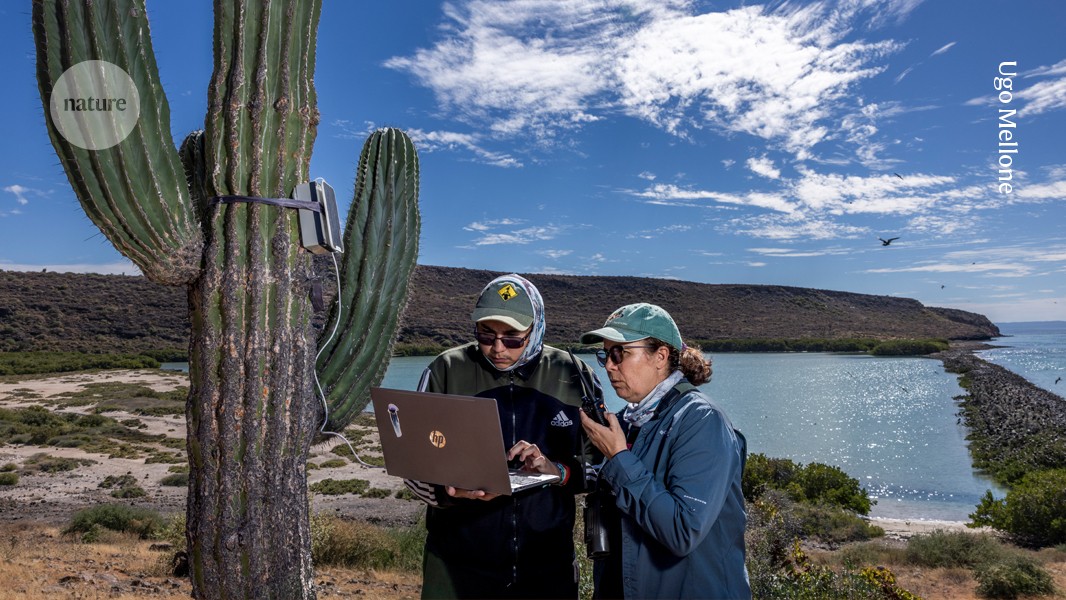Studying seabirds with a cactus as a research assistant

Ecologist Cecilia Soldatini tracks the movements of magnificent frigatebirds
“This century-old cactus that stands on the uninhabited Isla Espíritu Santo, in the Gulf of California, Mexico, is like my very own field technician: the device that we’ve attached to it automatically collects data from tagged magnificent frigatebirds (Fregata magnificens) whenever they come within a 500-metre range. Every month, my team and I come by boat to retrieve the data, as I am doing in this picture with my student Joel Lopez (I’m on the right).
In this project, we tagged 30 individual birds with GPS data-loggers, including 10 that live in the local mangrove trees, which host around 500 breeding pairs. Catching these birds is tricky, so we do it at night when they’re less active; we can dazzle an individual with a light and avoid disturbing others.
The GPS tracking revealed that frigatebirds cross the Baja California Peninsula up to three times per day, an unusual behaviour for a seabird. On average, foraging trips last 14 hours and birds fly about 30 kilometres from the colony, with males venturing farther than females. One male even reached Clipperton Island in the Pacific Ocean, more than 1,500 km away, returning after a few days. Then he did it again exactly one year later.
Enjoying our latest content?
Login or create an account to continue
- Access the most recent journalism from Nature's award-winning team
- Explore the latest features & opinion covering groundbreaking research
or
Sign in or create an account Continue with Google
Continue with Google
Nature 640, 562 (2025)
doi: https://doi.org/10.1038/d41586-025-01070-7
This interview has been edited for length and clarity.
This story originally appeared on: Nature - Author:Ugo Mellone

















